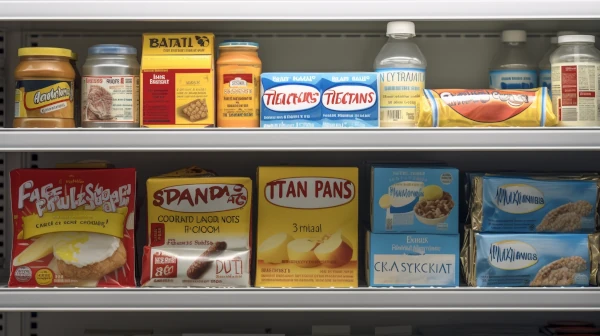If you’re purchasing a product labeled “gluten-free,” you probably expect to consume a gluten-free meal. Unfortunately, that might not be the case as there’s currently no legal definition for “gluten-free” in the United States. As a result, food companies can attach misleading or unfounded gluten claims to their packaging. However, after seven years of consideration, the US Food and Drug Administration (FDA) has promised to set gluten-free standards.
Proposed Gluten-Free Rule
The proposed FDA rule would classify a product as “gluten-free” if it contained no more than 20 parts per million of gluten. This is the standard used in the Commission of European Communities, comprising 27 countries, which is the same as the Codex Alimentarius Commission’s standard set in 2008.
Many experts believe that this proposed standard is appropriate. Dr. Stefano Guandalini, who founded the University of Chicago Celiac Disease Center in response to low celiac disease detection rates, considers that individuals with celiac (an autoimmune reaction to gluten in wheat, rye, and barley) can safely consume up to 10 mg of gluten daily. According to this rule, someone with celiac would only develop symptoms if they ate over a pound of food with the maximum allowed gluten content.
Dr. Alessio Fasano of the University of Maryland’s Center for Celiac Research, who has conducted extensive research on gluten and celiac disease, also supports the proposed standard. He stated, “This is a standard that has been in use in Europe for almost two decades, and the science supports the U.S. adopting it as well.”
A Growing Market
With the market for gluten-free products expanding rapidly, it’s likely that the FDA will implement an enforceable gluten-free standard soon. Approximately $2.6 billion worth of gluten-free products are sold annually in the United States, a significant increase from $560 million seven years ago.
Beth Hillson, president of the American Celiac Disease Alliance (ACDA), an organization representing patients, researchers, food manufacturers, and others in the celiac community, has expressed the necessity for such a labeling rule. In her words, “This is critically important since individuals with celiac disease and gluten sensitivity have been left to fend for themselves while companies place ‘gluten-free’ on products like water that never contained any of the forbidden grains — wheat, rye, or barley.”
Dr. Guandini agrees, stating to the ACDA, “Celiac disease is a serious, life-threatening medical condition. In this country, the food products that patients need to treat the condition are virtually unregulated, leaving these individuals at risk of harm each and every day. It is inexcusable.”
Identifying Gluten Sources
It’s crucial to identify apparent and hidden sources of gluten to ensure that those with celiac disease and gluten sensitivity can maintain their health. The most common gluten-containing grains include wheat, rye, and barley.
Gluten can also be found in medications and supplements, where it often takes the form of fillers or binding agents.
Always check the ingredients list of packaged foods, as gluten can hide within the following:
- Malt: Derived from barley and often used in beverages and cereals
- Modified food starch: If the source is unspecified, contact the manufacturer to ensure it’s not derived from wheat
- Seasonings: Can contain traces of gluten in their mixtures
- Soy sauce: Regular soy sauce often contains wheat
Seeking Support
Those with celiac disease and gluten sensitivity may benefit from contacting their local celiac support group. Most groups regularly share information on gluten-free products, medical updates, and gluten-free events in the community. You can also join online discussion boards and forums to connect with others living with celiac disease and gluten sensitivity. These online communities regularly share tips and recommendations, such as restaurants and menus that cater to gluten-free diners.
Advocating for Better Gluten-Free Labeling
If you want to be informed about the FDA’s proposed rule and express your opinion, visit this link to send feedback to the FDA.
An enforceable gluten-free standard would assist those with celiac disease and gluten sensitivity in making informed decisions about their food choices while holding manufacturers more accountable for their labeling. While the FDA is taking steps toward implementing this standard, it’s essential to remain vigilant about gluten content in food products and seek support from others with the same dietary restrictions.



